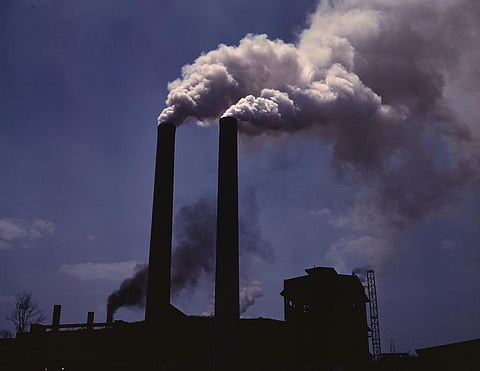

A large number of unfilled positions may be hindering the working capacity of pollution control boards, a series of papers has suggested. An expanded mandate, coupled with the staff crunch, has meant that regulatory scrutiny of polluting sources is much less than desirable.
Public policy think tank Centre for Policy Research released a new series of papers October 20 looking into the institutional structure and capacity of 10 State Pollution Control Boards and 10 Pollution Control Committees.
These pollution control authorities, all located in the Indo-Gangetic plain, have often come under fire for failing to effectively deliver on their mandate and lacking the resources and capacity to perform the functions assigned to them.
At least 40 per cent of all posts are vacant across nine agencies, the assessment found. The vacancy levels for technical positions are as high as 84 per cent in Jharkhand and over 75 per cent for Bihar and Haryana.
This means that the ability of the Boards to monitor industrial compliance is highly impaired. Engineers have less than a day to inspect, evaluate and approve each consent application in at least four states — Jharkhand, Punjab, Uttar Pradesh and Bihar.
The State of India’s Pollution Control Boards looked into the composition of the agencies, the qualifications of their leadership, and the adequacy of their capacity to perform their statutory functions.
The post of chairperson is not full-time in several states. Member secretaries in at least Delhi, Jharkhand, Chhattisgarh and West Bengal are part-time and hold an additional charge in other government departments.
Therefore, the leadership at these agencies cannot fully focus on their functioning, the study noted.
Several chairpersons and member secretaries have held their posts for less than a year in nearly every state, it found. The shortest tenure for a chairperson was 18 days in Chhattisgarh and 15 days for a member secretary in Haryana and Uttar Pradesh. Frequent leadership transfers make it challenging for them to conceptualise and deliver long-term plans.
Even more disturbingly, 53 per cent of the members of these authorities represent potential polluters like local authorities, industries and public sector corporations. This raises questions on conflict of interest.
On the other hand, scientists, medical practitioners and academics constitute only seven per cent of the members. The statutory requirement of having at least two members who have knowledge and experience in air quality management was not met by most Boards.
The papers have been authored by Bhargav Krishna, Shibani Ghosh and Arunesh Karkun from CPR, among others. At a panel discussion during the launch of the papers, experts pointed out the areas that need immediate attention.
“The research papers have helped identify the fault lines that need to be addressed,” said Anumita Roy Chowdhury, executive director for non-profit Centre for Science and Environment. She added that the assessment has come at a time when we need air quality management to make a paradigm shift.
“SPCBs require a lot more commanding position, rallying power to play that coordination and the cooperative role needed for multi-sector and multi-jurisdiction work,” she said. Chowdhury also spoke on airshed level regulation and stressed the need for reforms.
“Industries have to submit bank guarantees and if they are not able to comply with pollution norms, they are required to forfeit bank guarantees in some cases. Thanks to some directives from the National Green Tribunal, they are a useful source of revenue for SPCBs,” said Ashok Ghosh, chairperson, Bihar State Pollution Control Board.
If we need a clean environment, air and water, we will have to concentrate on the capacity of all the stakeholders — like industries and sewage treatment plant, said Ajay Deshpande, adjunct professor at IIT-Bombay and former expert member at NGT.
“We need to have a system in place for documentation, standard protocols, guidelines in the purview of the Board. There will be less time spent on litigation and blame game,” Deshpande added.
“From the World Bank, we want India to invest more in air quality management. Now it is the need of the hour. But the capacity issue is central and core to this. The focus should be both on capacity building and investment,” said Karin Shepardson, lead environmental specialist for World Bank.
Institutional issues that have been identified time and again as a significant constraint to effective environmental management by Parliamentary standing committees, academic and civil society organisations and the government.
The series of papers have sought to highlight institutional issues that have been identified time and again as a significant constraint to effective environmental management by Parliamentary standing committees, academic and civil society organisations, and the government.
Air pollution in the Indo-Gangetic Plain is an ongoing public health emergency and the distinct lack of progress made in strengthening our frontline environmental regulators is a symptom of executive apathy, the assessment said.